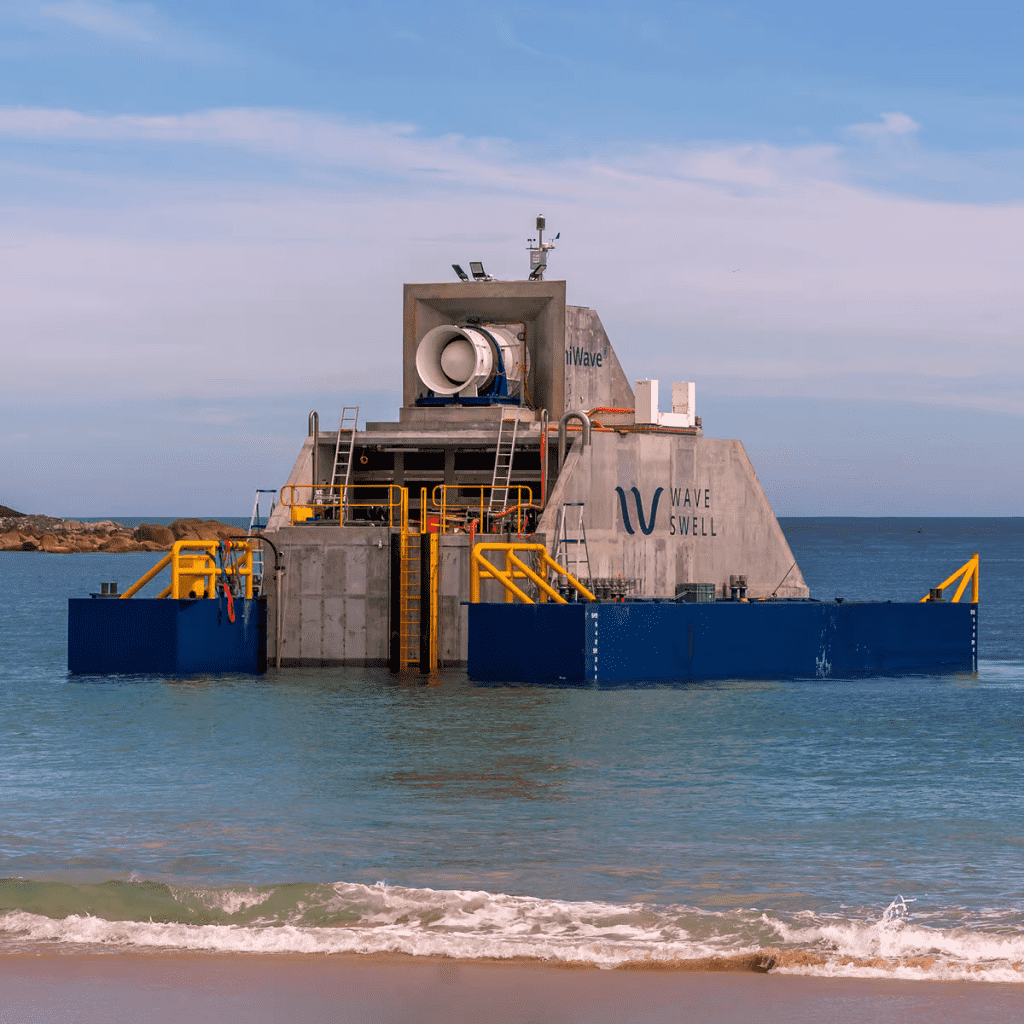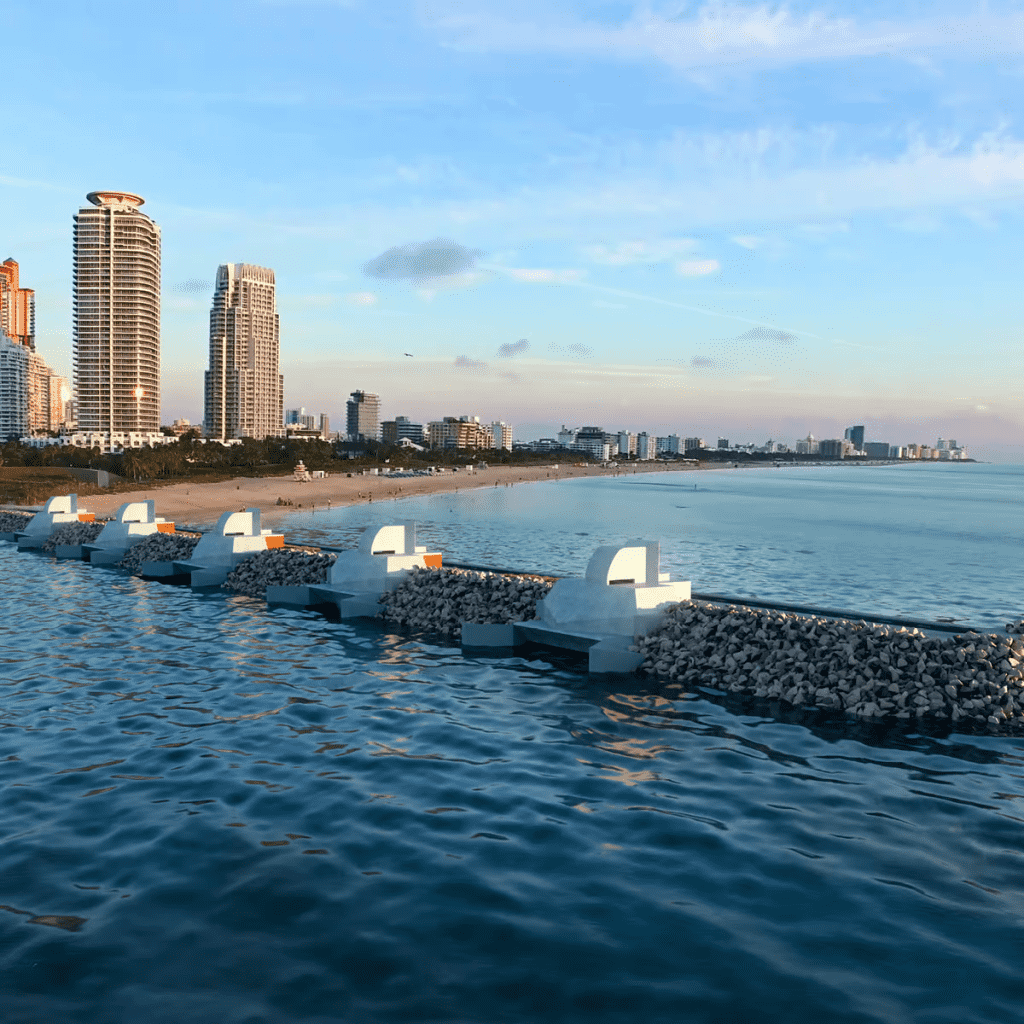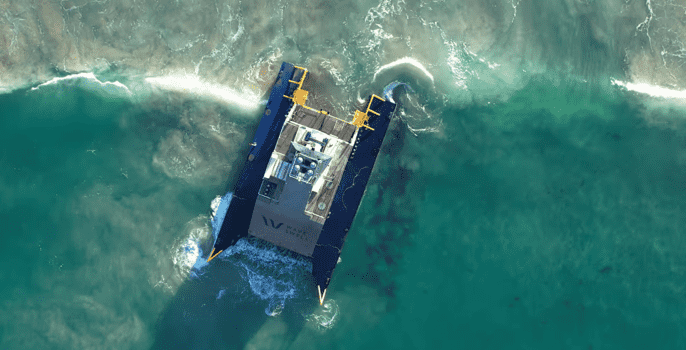The extraordinary UniWave 200 developed by Wave Swell Energy is a sea platform that uses an artificial blowhole formation to create air pressure variations that operate a turbine and transfer energy back to land.
The UniWave system is a floatable device that can be towed to any coastal site and connected to the local electricity infrastructure. Wave swells force water into a specially built concrete chamber, pressurizing the air within and forcing it through an outlet valve. As the water recedes, it creates a huge vacuum, sucking air into a turbine at the top and generating electricity, which is then supplied to the grid via a cable.

As a result, it collects energy from the whole column of water that reaches its chamber, making it more efficient than wave energy devices that harvest energy from the top of the seafloor, according to the team.
The main innovation here is one-way generation. Previous systems that harvest the same effect use bi-directional turbines, which necessitate the capacity to reverse blade pitch or redirect airflow. However, WSE claims that its design allows for considerably cheaper and simpler turbines, which should last longer because they don’t have as much salt water thrown through them when a big wave strikes.
Moreover, all of this device’s mechanical parts are above the waterline, which should assist in extending its service life while also making it more durable.
Fortunately, the UniWave’s configuration makes it effortless to attach to breakwaters and seawalls, turning a project to prevent coastal erosion into a renewable energy source.
Last year, a 200-kW test platform was built near King Island to withstand the fierce waves of the Bass Strait, which separates Tasmania from mainland Australia. It has continuously supplied renewable electricity to the island’s microgrid for the previous 12 months.
The WSE team has made a few live modifications to the design while it is in use, which has significantly enhanced its performance.

“We set out to prove that Wave Swell’s wave energy converter technology could supply electricity to a grid in a range of wave conditions, and we have done that,” said WSE CEO Paul Geason in a press release.
“One key achievement has been to deliver real-world results in Tasmanian ocean conditions to complement the AMC test modeling. In some instances, the performance of our technology in the ocean has exceeded expectations due to the lessons we’ve learned through the project, technological improvements, and the refinements we have made over the year.”
“Our team is excited to have achieved a rate of conversion from wave power to electricity at an average of 45 to 50% in a wide range of wave conditions,” he continues.
“This is a vast improvement on past devices and shows that the moment has arrived for wave power to sit alongside wind, solar, and energy storage as part of a modern energy mix.”
The King Island platform will be used at least through the end of 2022, and the company is already preparing to start production.
“Having proven our device can survive the toughest conditions the Southern Ocean and the Bass Strait can throw at it and deliver grid compliant electricity, our priority now shifts to commercializing the technology,” said Gleason.
“For Wave Swell, this means ensuring the market embraces the WSE technology and units are deployed to deliver utility-scale clean electricity to mainland grids around the world.”
Source: Wave Swell Energy


